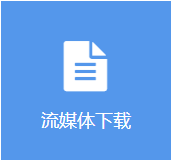氢燃料电池阳极引射循环技术
王彦波1,孙玉玲2*,冯刚2,时保帆2,唐亮2,王丹博2
1.潍柴新能源动力科技有限公司,山东 潍坊 261061;
2.山东国创燃料电池技术创新中心有限公司,山东 潍坊 261061
摘要:为提高氢燃料电池引射器性能,系统分析引射器结构与工作原理,根据气体相态、喷嘴结构、喷嘴数、分布级数和引射流体混合特征等详述引射器的分类及特点,在此基础上对引射器未来发展方向进行预测。分析结果表明:采用多级引射器、多喷嘴引射器、旋流引射器、可变几何引射器等新结构和新技术,并通过优化引射器的智能控制策略等方法可解决引射器变工况适应性差的问题;引射器设计开发过程中,应基于实际气体组分和工况参数进行数值计算和结构设计,减少水蒸气凝结,保证引射器的引射性能;随着节能环保需求的提高和新兴技术的发展,引射器研究呈现液体力学、材料科学与智能控制等多学科交叉融合的趋势。
关键词:燃料电池;引射器;现状
Anode recirculation technology using ejector in hydrogen fuel cell
WANG Yanbo1, SUN Yuling2*, FENG Gang2, SHI Baofan2, TANG Liang2, WANG Danbo2
1. Weichai New Energy Power Technology Co., Ltd., Weifang 261061, China;
2. National Center of Technology Innovation for Fuel Cell, Weifang 261061, China
Abstract: To improve the performance of hydrogen fuel cell ejectors, the structure and working principle of ejector are systematically analyzed. The classification and characteristics of ejector are described based on gas phase state, nozzle structure, nozzle number, distribution level, and ejection fluid mixing characteristics. Based on this, the future development direction of ejectors is predicted. The analysis results indicate that new structures and technologies such as multi-stage ejector, multi nozzle ejectors, swirl ejectors, and variable geometry ejectors can be adopted, and the problem of poor adaptability to variable operating conditions of ejectors can be solved by optimizing the intelligent control strategy of ejectors. During the design and development process of the ejector, numerical calculations and structural design should be based on actual gas composition and operating parameters to reduce water vapor condensation and ensure the ejector′s ejection performance. With the increasing demand for energy conservation and environmental protection and the development of emerging technologies, the research on ejector is showing a trend of interdisciplinary integration of fluid mechanics, materials science, and intelligent control.
Keywords: fuel cell; ejector; status



